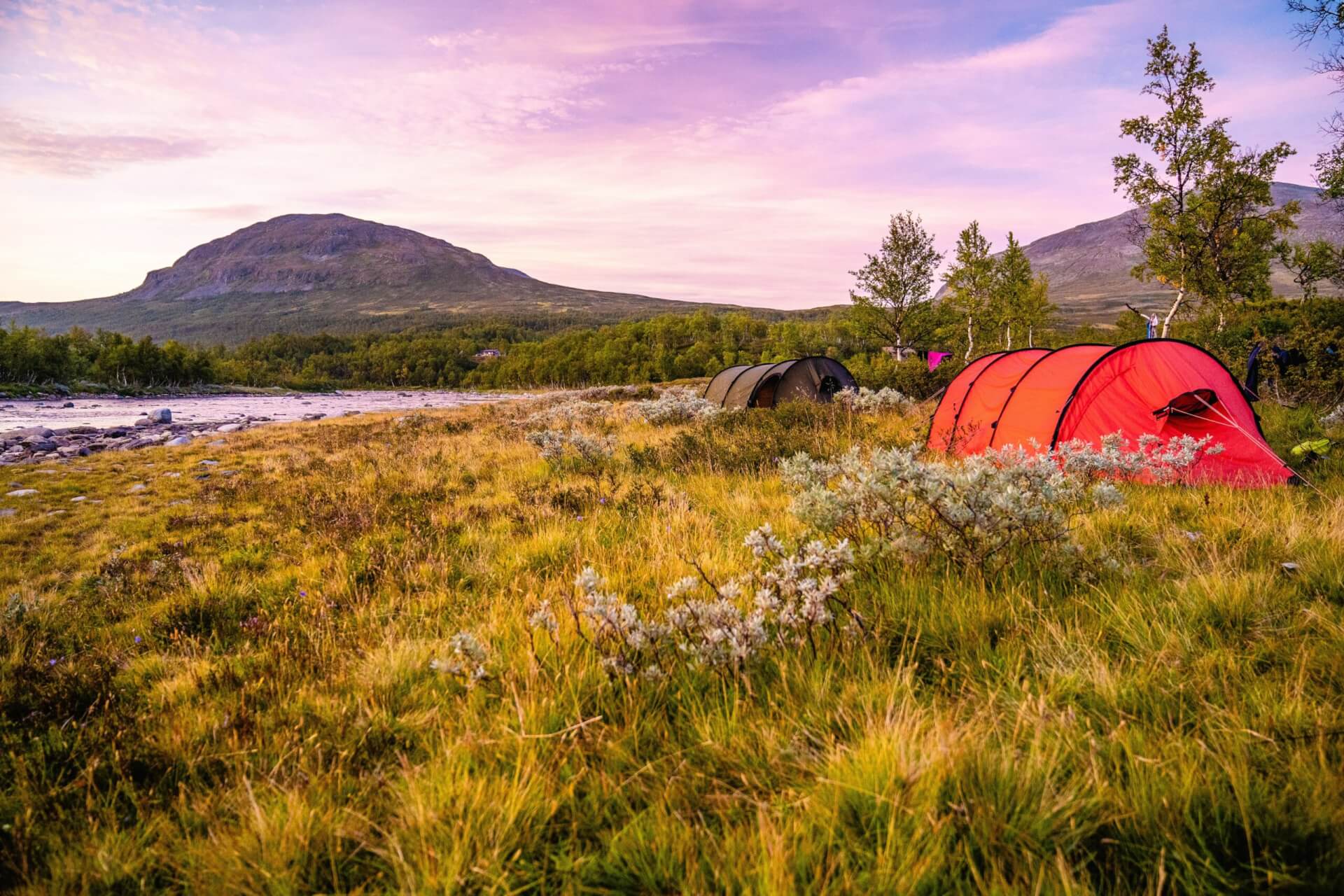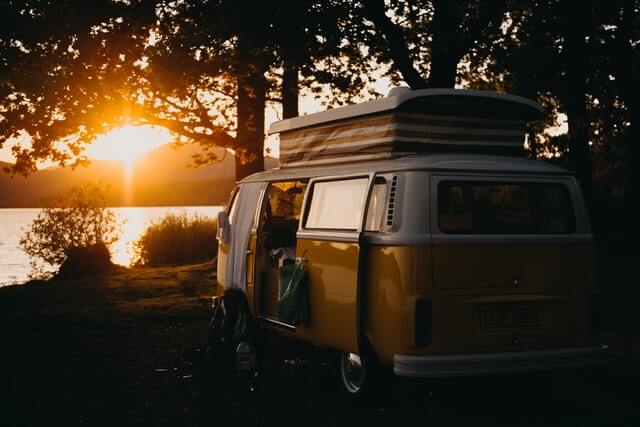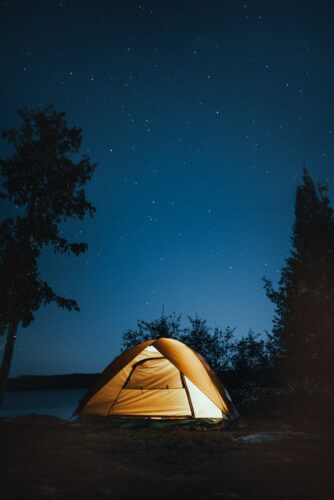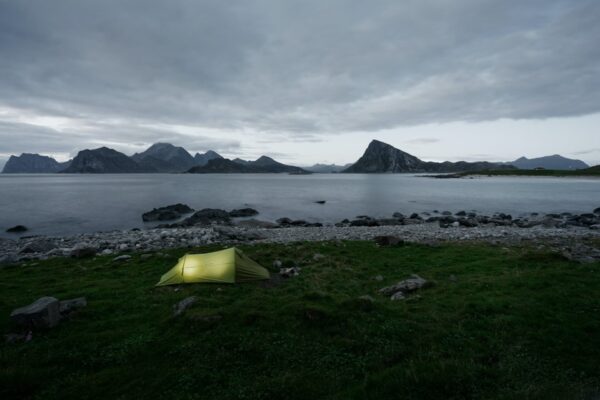Whether southern, central or northern Sweden: Sweden’s wild nature is a favourite destination for campers of all kinds. It’s not just the unspoilt coastline and inland lakes that attract travellers: the so-called Allemansrätt, which translates as Everyman’s Right, is another reason for many to travel to the northern European country. Under certain conditions, it allows travellers to spend the night in the great outdoors
Even those who don’t want to camp in the wild will find a large selection of well-equipped and affordable campsites and even though the north is known for its high prices, camping here is surprisingly affordable.
The possibilities here are as varied as the requirements: find out exactly what Allemansrätt allows you to do, what you should look out for and how to plan the perfect camping trip to Sweden.
Wild camping in Sweden – what the Allemansrätt says
Allemansrätt has a long tradition. Anchored in Swedish culture since the Middle Ages, it is not an independent, fixed law, but rather a fixed expression for a series of rules that are anchored in various Swedish legal texts.
It can be summarised as the right to move freely in nature as long as you do not harm it. Berries, flowers and mushrooms may also be picked for personal use if they are not protected (or on private land, of course). This does however not apply to fishing and hunting. Here you can find out in detail which licences you need in your region.

Camping in the great outdoors – what is permitted
You can camp almost anywhere for one night. The exceptions are private land (within sight of houses) and urban green spaces. Even a small fire is allowed if you are not on a cliff or if there is currently a ban. If you would like to find out more about wild camping, we recommend our comprehensive guide to wild camping in Sweden, including a practical packing list.
Travelling with a motorhome – where you are allowed to stay overnight
If you are travelling with a caravan or motorhome, you are allowed to stay outside a campsite for 24 hours in designated parking spaces or on the roadside. This means that you are more restricted than if you are travelling with a tent.

However, with a little research, you can easily find idyllic car parks near the lake or sea. On Sundays or public holidays, the time limit is even extended to the following working day.
Campsites in Sweden
Considering the comparatively high cost of living in the north, camping is surprisingly affordable. Further, the campsites are generally very well equipped. According to the ADAC, Swedish campsites were even below the European average in 2017.
Especially those that belong to the SCR, the Swedish Camping Association, are of high quality. However, in order to stay overnight, you need a camping card, the so-called Camping Key Europe. As this is the case with the majority of all Swedish campsites, the card is recommended. You can get it for the equivalent of around 16 euros per year (~13 GBP).
How expensive is camping in Sweden?

How expensive your camping trip in Sweden will be depends mainly on whether you hire a vehicle or not. However, this is a good option, if you are travelling by bus, plane or train. Motorhomes are available from around 80 euros (~ 60 GBP) per night. However, prices vary depending on the season and equipment.
If you are travelling with your own vehicle, this is of course not applicable. However, you have to be prepared for the cost of a ferry trip or crossing the Öresund Bridge, which connects Copenhagen and Malmö. You can’t avoid crossing it if you want to travel to Sweden by land. Depending on the size of your vehicle, the toll is from 50 euros (~42 GBP) – as of 2020 . The price is lower for motorbikes.
If you are not wild camping, you should expect to pay between 12 and 25 euros (~10-21 GBP) for an average tent pitch for two people. A motorhome pitch costs around 20-40 euros (~17-34 GBP) per night. Overall, it is the cheapest to go camping outside of the peak season in summer, and the further up north you go.
Travelling: the best way to get to Sweden
You have various options for travelling to Sweden. The quickest way is by plane. A direct flight is the most convenient way to reach Stockholm and Gothenburg. If you want to travel north, Umeå or Östersund are the best options. The best way to reach smaller airports is by domestic flight from Stockholm.
The disadvantage of this option is that you will probably need to get a hire car or campervan. On the other hand, the flight saves you the journey, which can be several thousand kilometres, depending on where you are coming from.

If you want to take your own car or campervan with you, you can travel by ferry as well. There are various ferry lines that travel to Denmark and Sweden. They most frequently call at Malmö, but other ferry routes are also possible. You can reach your destination after one night on the ship.
Travelling by ferry is more expensive, but can be worthwhile if you want to take your own vehicle with you. Overnight journeys are possible as well.
If neither flying nor ferry journeys are for you, you can reach Sweden by land. Whether by car, train or bus, the overland route through Denmark will take you to Malmö. Another advantage of having your own car is of course that you can easily stow your camping equipment.
